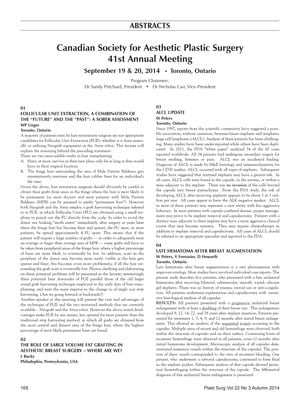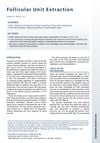Canadian Society for Aesthetic Plastic Surgery 41st Annual Meeting, Toronto, Ontario
January 2014
in “
Plastic Surgery
”

TLDR Follicular Unit Extraction (FUE) for hair transplants has limitations and may not be suitable for most patients.
At the Canadian Society for Aesthetic Plastic Surgery 41st Annual Meeting in 2014, WP Unger presented a lecture highlighting the limitations of Follicular Unit Extraction (FUE) for hair transplantation. Unger pointed out that most patients are not ideal candidates for FUE, including both manual and device-assisted methods like Neograft or the Artas robot. The primary concerns were that transplanted hairs have a limited survival time, mirroring their original lifespan, and the donor hair from the fringe area around male pattern baldness (MPB) becomes narrower and less dense over time. FUE's requirement to space grafts about 4 units apart to prevent a "moth-eaten" appearance could lead to harvesting from these unstable areas, potentially resulting in further hair loss. Unger proposed that traditional strip harvesting could be more beneficial for the majority of patients, as it allows for the collection of grafts from the most stable and dense part of the fringe area. Despite another speaker being scheduled to discuss FUE's benefits, Unger focused on its drawbacks, likening them to those of outdated hair transplant methods.




